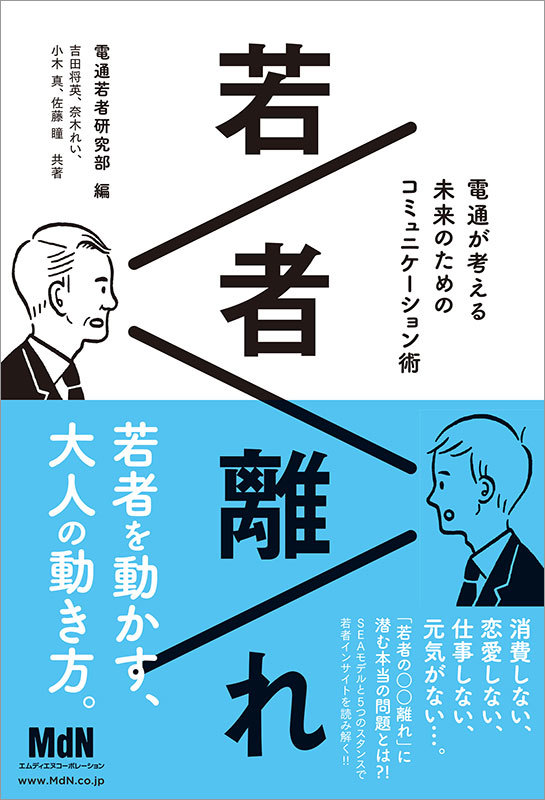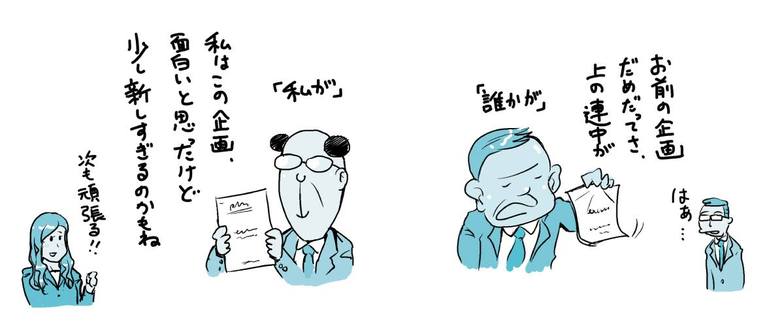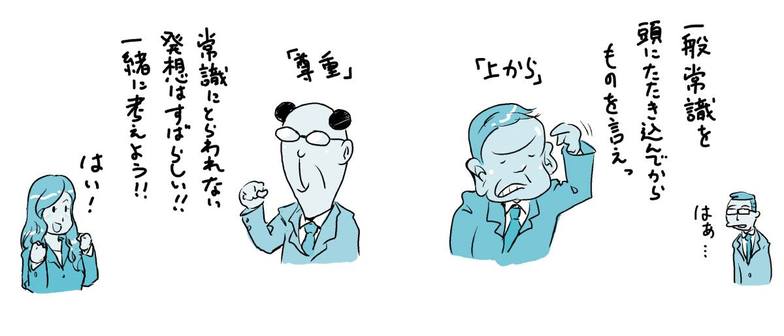
B6 size, 256 pages, ¥1,500 + tax, ISBN 978-4-8443-6600-3
Book details
here
A serialized column linked to the new book " The Youth Divide " by Dentsu Inc. Youth Research Department (Dentsu Wakamon).
Parts 1, 2, and 3 examined the background and meaning behind "adults distancing themselves from youth" and assessed the degree of this distancing. This installment explores the ideal stance adults should adopt when communicating with young people.
What is this "Love Through Misalignment" expected of adults?
Are you reflexively dismissing the opinions and proposals young people bring to you?
Are you arrogantly repeating "Just do it!"?
The gap in thinking and values between young people and adults. This can also be described as the gap between "one's own yardstick" and "another's yardstick." Regardless of whether someone is an adult or a young person, this is a gap everyone feels to some degree when interacting with others. Thinking about it this way, don't you agree there's no need to force yourself to empathize with this gap, nor to dismiss it outright?
Rather than competing over which set of values is right or wrong, Dentsu Inc. believes that adults who can embrace and find enjoyment in the very existence of this gap—who adopt a stance of finding it interesting—are the ones who can maximize the " qualitative influence " of young people's original ideas and imagination. This approach fosters a positive relationship beneficial for both adults and young people.
So, what stance should adults adopt to avoid "drifting apart from youth"? Dentsu Inc. Wakamon defines the ideal adult stance—one that neither forces empathy nor outright rejects youth—as the "Discrepancy Love Stance": a stance that embraces the gap with youth.
From the "Five Stances of Adults with Love for Discrepancy" introduced in the book "Disconnecting from Youth," we'll pick two to explain.

*Excerpted from the book "The Youth Divide"
Misaligned Affection Stance ①: Engage with "I" rather than "someone else"

Illustration: Yosuke Kojima (Dentsu Inc., Creative Planning Division 4)
First, when facing the other person's "I," face them with your own "I." That's the stance.
When you belong to an organization, it's easy to get swept up in the logic of that organization. As a result, you might tend to communicate using "someone else" as the subject: "Because the higher-ups say so," "Because that's our rule," "I think some people would oppose that."
But this approach makes it difficult to gain young people's understanding or agreement. They might think, "Blaming others..." or "What about you...?" and risk losing their willingness to listen altogether.
Adults bring up invisible "someone" to refute things because they don't want to be the bad guy. That insight might be valid, but if adults themselves face things head-on using "I" statements instead of avoiding it, and young people feel "I can trust what this person is saying," wouldn't dialogue progress much more smoothly?
Misaligned Love Stance ③: Not "From Above," But "Respect"

Rather than approaching interactions with a seniority-based mindset—where older people are automatically seen as superior/correct and younger people as immature/wrong—this stance encourages adults to respect young people's strengths and young people to respect adults' "quantity and quality of real-world experience" when engaging in dialogue.
When we at Dentsu Inc. talk with young people—whether students or new professionals—we prioritize learning from them and interacting on equal footing, rather than assuming a one-sided teaching role. In other words, a "sideways gaze" rather than a "top-down gaze."
Kensuke Harada, founder of the NPO YouthCreate, whom Ipreviously interviewed, suggested that to bridge the gap between politics and young people, adults should adopt a "view from below." Regarding the voting age being lowered to 18, he argued we should approach it not as "giving them the right," but with the stance of "asking for the power of young people."
If asked to list five things you've learned from the young people you interact with daily—like subordinates or juniors—could you do it immediately? If we only engage with young people from the stance that they are beings to be taught and directed, beings who should follow those above them, there will be no mutual understanding or growth.
That concludes the two "discrepancy-loving" adult stances proposed by Dentsu Inc. We believe that embracing the gap in values with young people positively, finding enjoyment or amusement in it itself—this "discrepancy-loving" stance—is the fundamental adult approach for building the future together with young people. We would be delighted if you could put this into practice with the young people around you.







